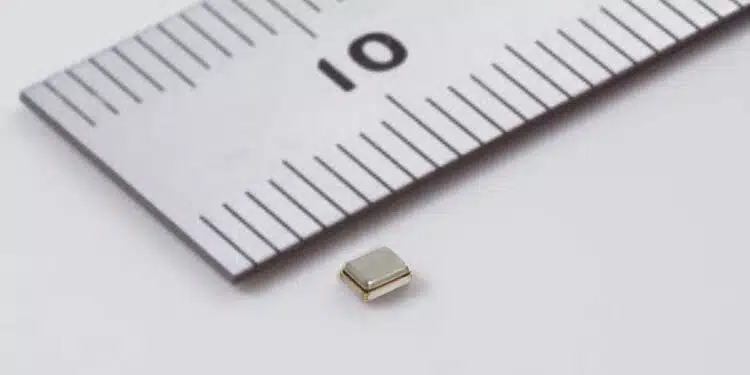Murata Manufacturing Co., Ltd. commercialized the ‘XRCGB_F_C’ series compact crystal unit in 2016 size for in-vehicle infotainment*1 and other automotive applications. Mass production has already begun.
Most in-vehicle infotainment systems use 3225 size crystal units. In recent years, the growing demand for enhanced functionality in electronic systems—particularly with the integration of ADAS*2 — has led to an increased reliance on electronic components.
This trend necessitates the development of even smaller electronic parts. Simultaneously, communications standards for in-vehicle systems are also advancing, which results in an intense wireless traffic of these individual devices.
Under these circumstances, signal transmission timing must be accurately synchronized between in-vehicle device ICs in order to correctly receive electric signals on frequencies defined by different communications standards and avoid inter-IC communication errors. This therefore requires high-precision timing devices that generate stable clock signals.*3
To respond to this need, Murata developed this 2016-size product for in-vehicle applications, achieving both smaller size and higher precision thanks to our original packaging technique and design and process optimization. Compared to the 3225 size, the new product achieves about 60% reduction in implementation space, contributing to downsizing the device itself while offering enhanced functionality. This product also features powerful cracking resistance while soldering and is preferred by many customers for in-vehicle applications.
We will continue to help bring safety and reliability to customers by expanding the use of highly reliable and high-performance crystal units.
- *1In-Vehicle Infotainment (IVI): An automotive function that provides information and entertainment to the driver and passengers through an IT device mounted on the automobile.
- *2ADAS: Advanced Driver Assistance System.
- *3Clock signals: Signals transmitted at a stable cycle with certain intervals.
Features
- Compact 2016 size
- High precision
- Operating temperature 105°C guaranteed
- High resistance to cracks while soldering
- Highly reliable with a low failure rate (particle-less)
- Stable supply
- Lead-free































